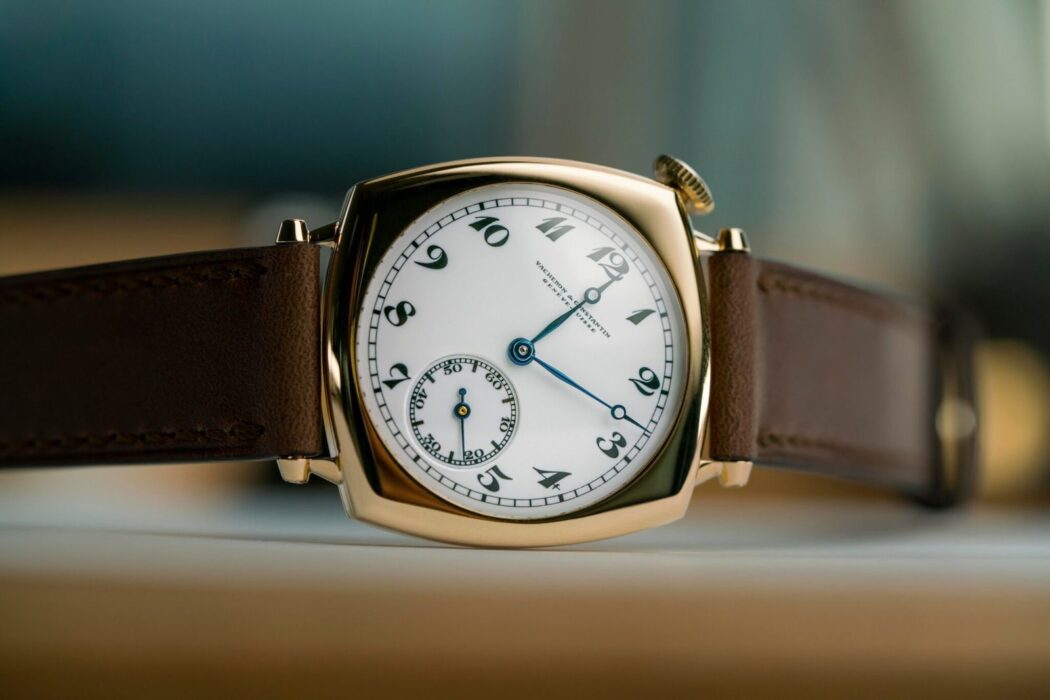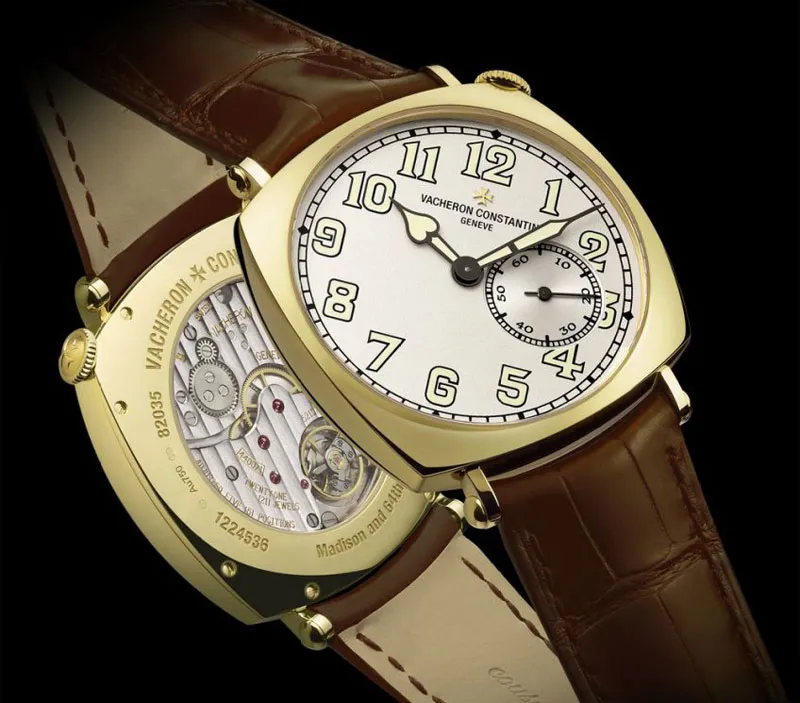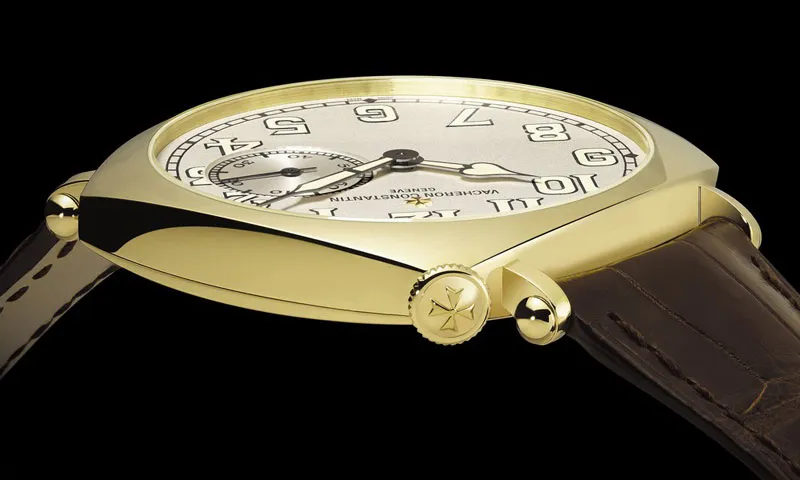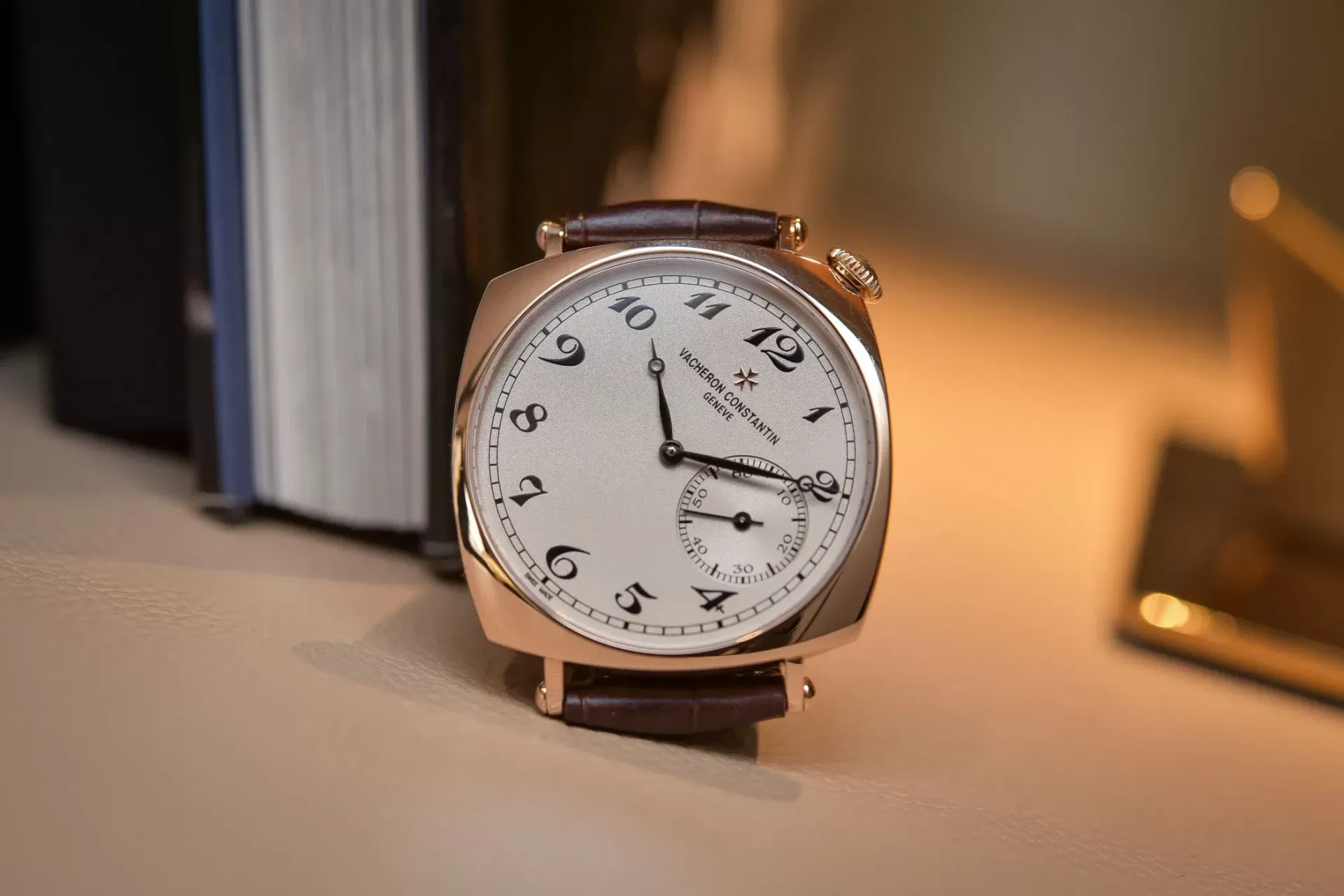Using vintage tools and techniques, the unique American 1921 watch was created from scratch.
In Vacheron Constantin’s case, there was no need for an update to honor their 100th anniversary.
In spite of the fact that the watchmaker’s American 1921 model was released this year in new sizings and case materials, the pièce de résistance is its literal replica of the original from the Roaring Twenties. All parts except the strap, bridges, and plates were made exactly like they would have been 100 years ago.

As the company’s first cushion-shaped timepiece, created in 1919 with an off-center dial, its original version was created so the wearer could read the time better while driving. A total of 12 pieces were made, but most were sold in the United States. In 1921, the second series debuted, with only 24 pieces, with a more military-inspired dial design and different lugs.
Also, the American 1921 is based on the second series of the same name.
Outside of archival components and documents with renderings of early design, the exact watch that was used as the physical blueprint for this singular piece was a 1921 American once owned by Reverend Samuel Parkes Cadman. Cadman purchased two first series pieces in 1928, when he became famous in the United States as the pioneer of Christian radio broadcast sermons. To create this modern remake, Vacheron Constantin used one that was acquired by the company in 2012 and used by its heritage and restoration specialists.
A 15-month effort was involved in creating this timepiece from scratch by the in-house team. There were 118 caliber components in the archive, including the hands, gear train, wheels, hairspring, balance, and pinions, all of which were old and new-condition stock parts from the 1920s.

Vacheron Constantin has thousands of historical stock parts, as well as 420 linear meters of archives containing every piece manufactured since its founding in 1755.
Despite the extensive expertise, the 16 original ruby jewel bearings proved to be a significant challenge. Five practice watches were constructed to learn the antique method. Four out of five were used before the antique method was mastered.

Every aspect of this watch required the use of era-appropriate equipment and, in some instances, hand crafted tools. From the single Côtes de Genève finishing to the 31.5 mm 18-karat yellow-gold case to the grand feu enamel dial and hour markers, everything required the use of era-appropriate machinery and, in some instances, hand crafted tools.
It is constructed in two parts, both in enamel, with Arabic numerals on top, since the hour and minute hands are so close to the dial’s surface.
It didn’t stop there. Despite the fact that the strap isn’t vintage stock, we got it from a supplier that had one that closely resembled a calfskin leather style from the early 20th century. Even the logo on the dial is the same as it was originally.

At Vacheron Constantin’s new Fifth Avenue flagship next month, the watch will make its way across the Atlantic for the first time, where it will remain on display until October, just like its early predecessor. In addition, it will be part of a traveling exhibit that will tour other countries in the future. So far, VC hasn’t decided whether to sell the watch, but it wouldn’t hurt to inquire. This will be the only one of its kind. According to Selmoni, there are only 10 early models still in existence, three of which belong to the company’s private collection, so it would be an impressive addition to any museum’s collection.
If sold, it will likely fetch an astronomical price.



